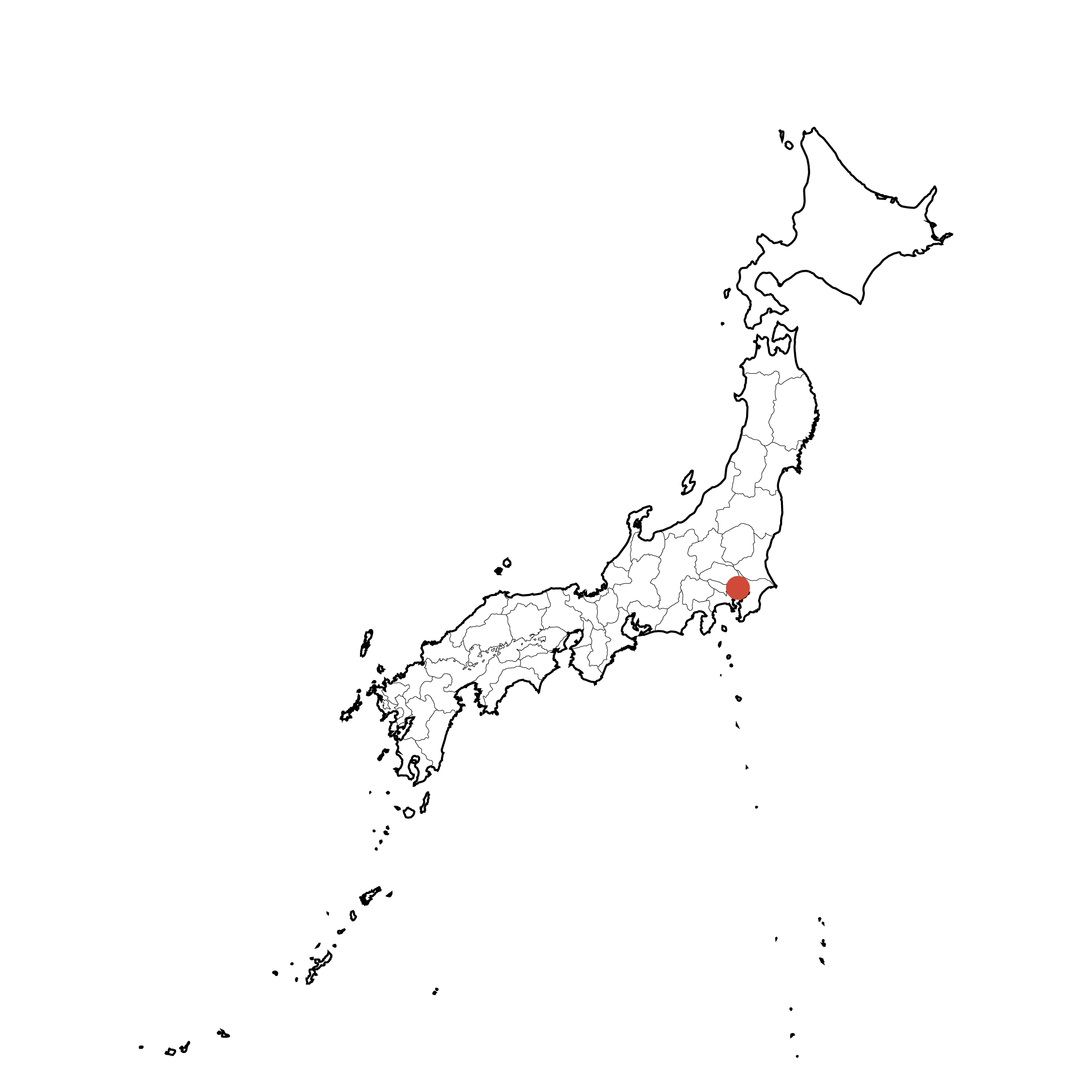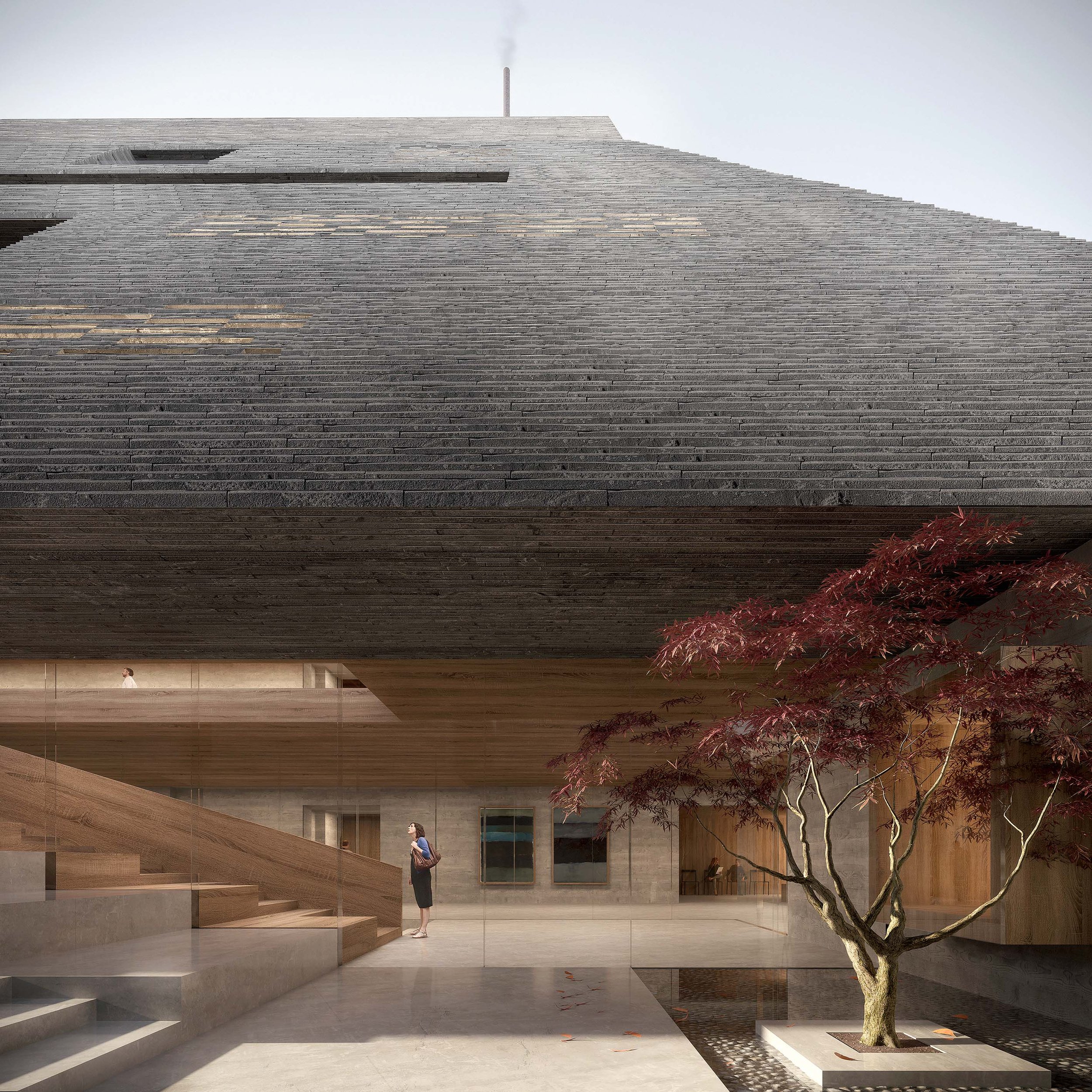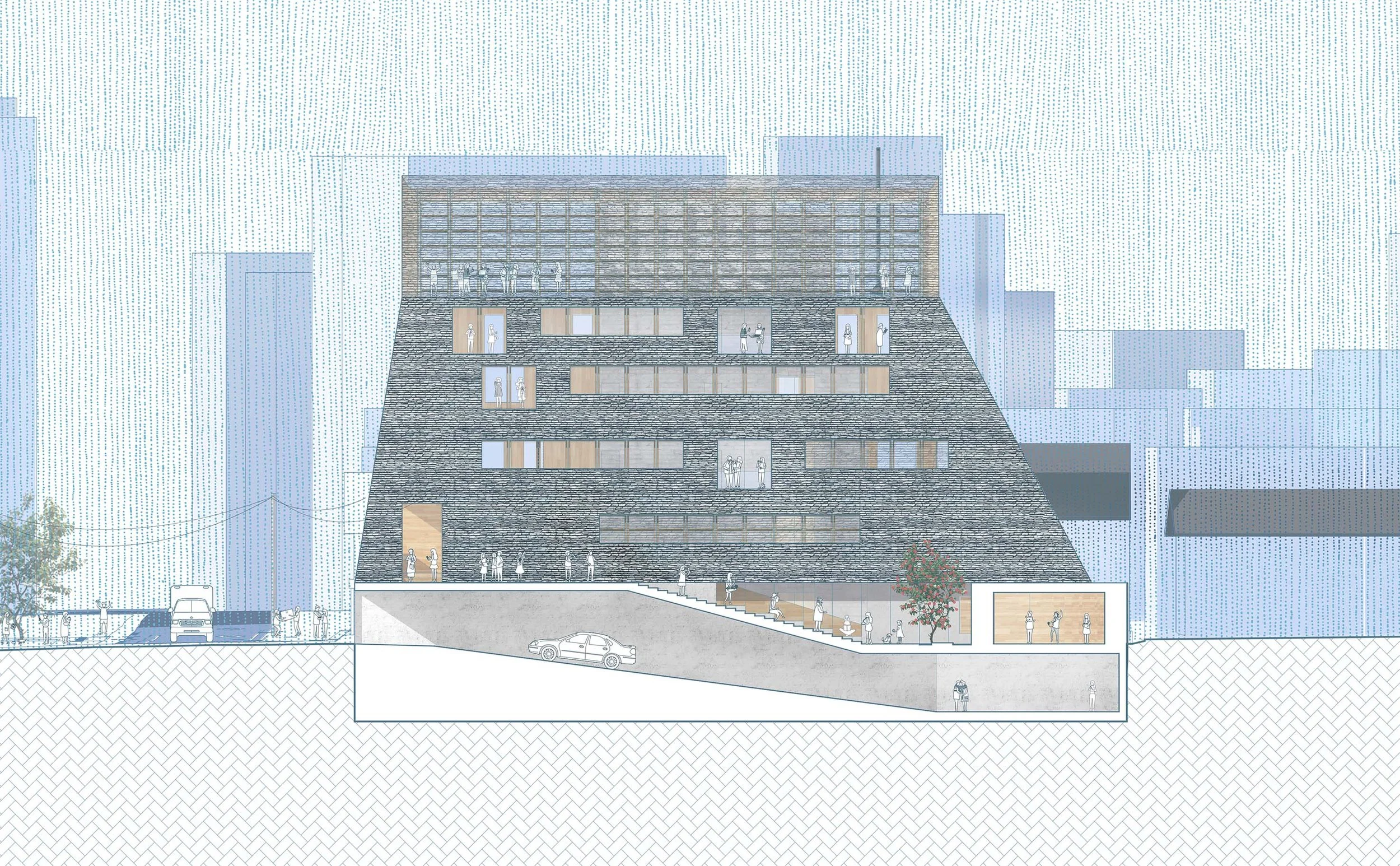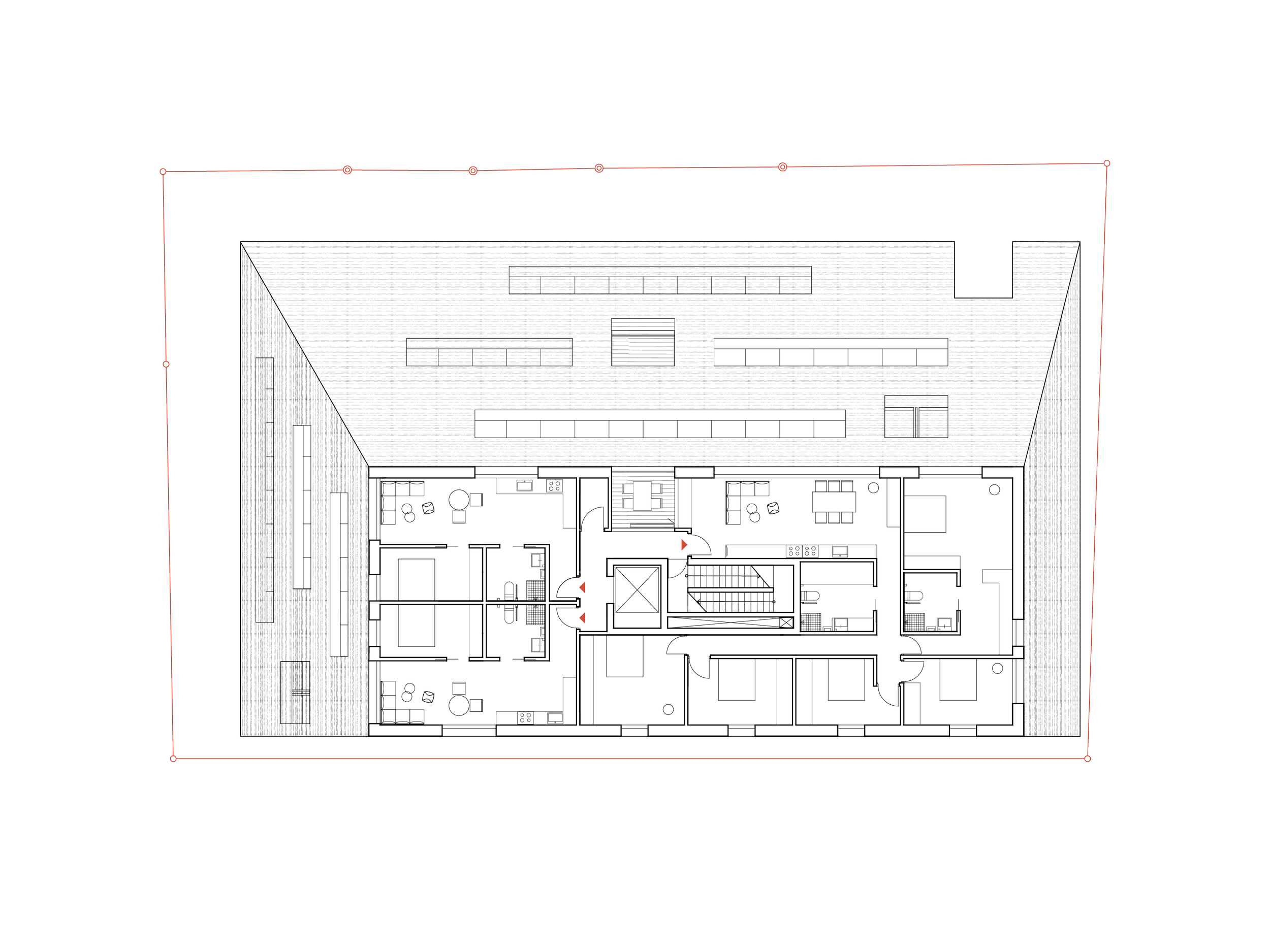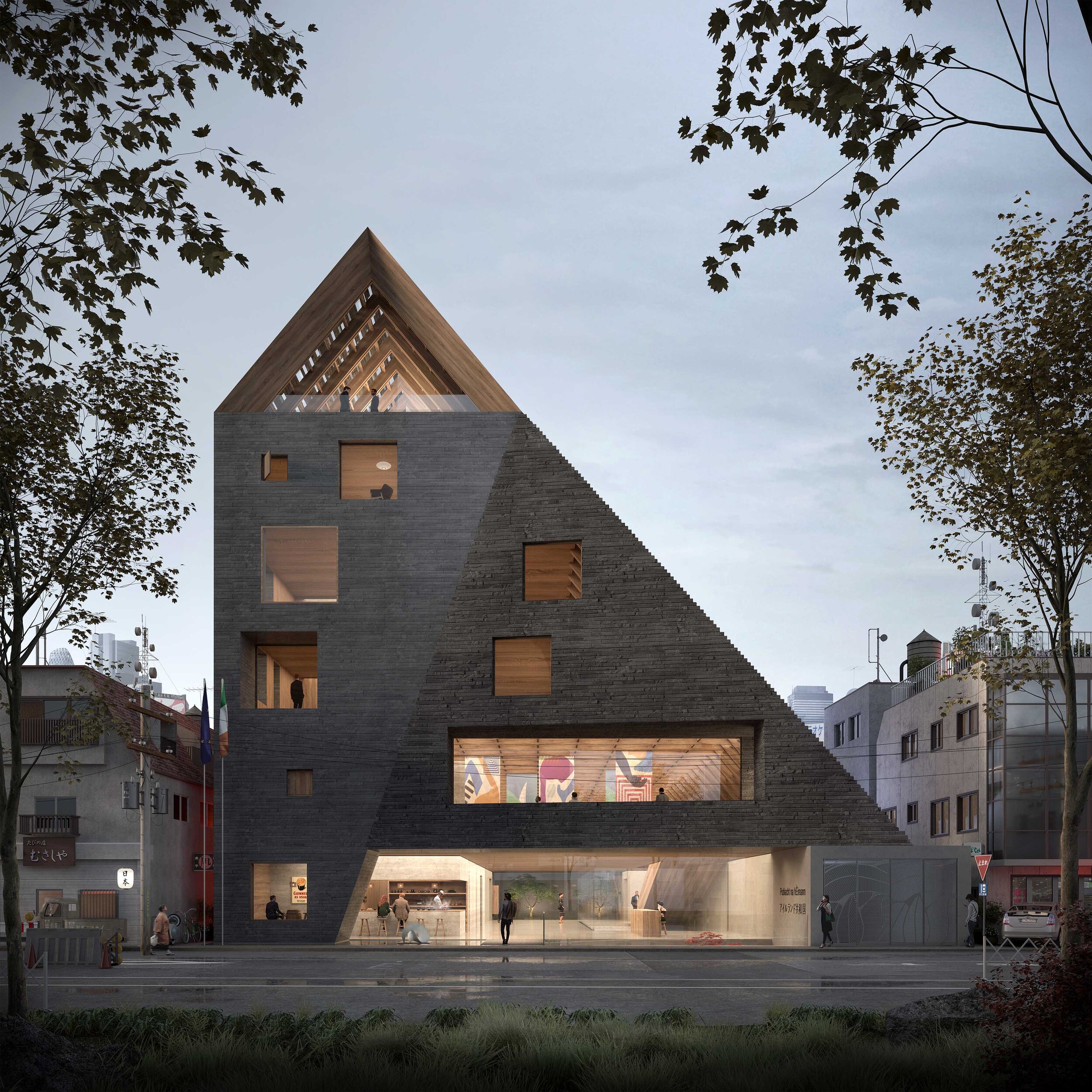
EMBASSY OF IRELAND, TOKYO
YEAR 2019
TYPE Embassy, diplomatic, cultural
SIZE 3000 m²
STATUS Competition entry
CLIENT The Department of Foreign Affairs & Trade
COLLABORATORS NSW Arkitektur & Canice Architects (IE)
LOCATION Tokyo, Japan
Upper residence of Matsudaira Tadamasa. Closer inspection shows how animated this community was, despite being a gated one by design - the moat, samurai guards, and being the residence of the then daimyō of the Edo period.
Credit: Edo-zu byōbu screens (17th century).
Shared Customs
This entry deals with two topics: investigations of the shared customs between the two island nations of Ireland and Japan, leading to the inevitable conundrum that is the typology of embassies – how to embody the opposite functions of both hospitality and security.
The brief picks up on an idea of how Ireland and Japan relates to one another, such as trade, commerce, and being of similar democracies and innovations. This entry takes it further and delves into the architecture of shared customs. Even though the two nations are geographically very distant, they share some fundamental traits surrounding the humane and the nature. As different as these two are, the importance of hospitality, warmth, and politeness towards strangers, are common themes.
To bridge these cultures, this entry incorporates not only architectural cues from the past (Kyoto and Glendalough), but also the internationally recognisable Irish pub and the Japanese Izakaya. The culture that comes with them function as a common ground to lessen the formality and elitism that comes with an embassy. Another shared custom is its mutual approach to nature – that even in the most urban settings or on the countryside, both embodies the idea of coexisting and incorporating nature in their habitats.
Embassy as a Typology
Historically, the traditional embassy:
has been built on the values of one culture showcasing itself to another, a place of hospitality and goodwill between two nations.
Investigations on where the current embassy stands, shows security constraints that diminishes the traditional embassy, fortification rather than hospitable. The development over the last century has shown a disconnect rather than unification of two nations, due to espionage, sabotage, and terrorism.
The proposal captures the core value of the old, but also acknowledges the security needs of the new. This is achieved through elevation – the secure embassy functions is elevated to the second floor and beyond, freeing up the ground floor for a wide range of hospitable functions and cultural exchange, such as art exhibitions, book readings, music performances, trade fair.
Design Strategy
The design strategy purposefully ‘de-institutionalizes’ the otherwise highly secure typology. The traditional embassy can in many ways be interpreted as a smaller palace or villa, due to both important figures and functions it houses. Aside from security measures, an embassy is also much about administration as it is hospitality.
Form - the building lends its form from the regulation - light levels to the west and north of the site. This generates a building that is slender and considerate to its neighbours.
Expression - a commonality in Japan and Ireland, is their perception of the everyday life as an elevated artform. This is not far from the Irish pride of for example high craftmanship. Both island nations has a great history of carpentry, woring with natural materials and resolving them with high complexity (among others stone and timber).
high craft - commonality between irish and japan. Ireland great history of carpentry, also japan. Craft of working with natural material. Stone, timber.
Function - this new embassy accommodates several public facilities – exhibition hall, gallery, library and restaurant - promoting the shared values of the 2 island nations and cultural exchange by reinterpretation of Irish and Japanese traditional architecture.

